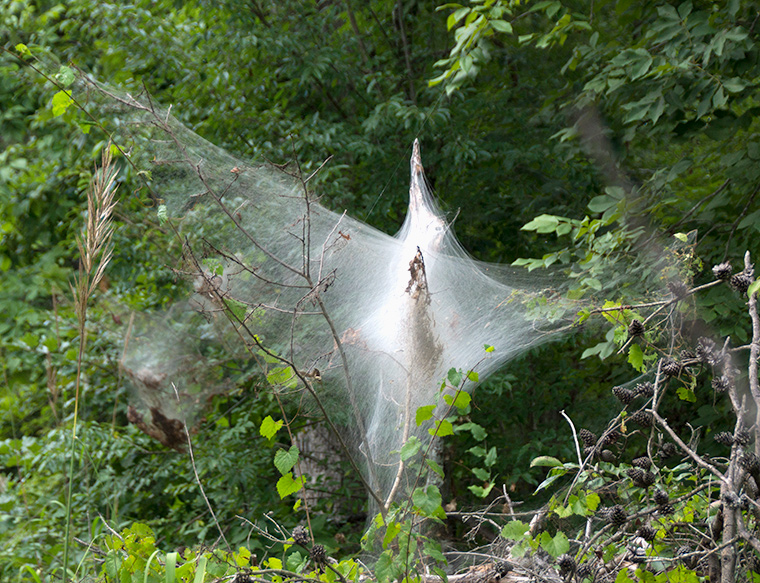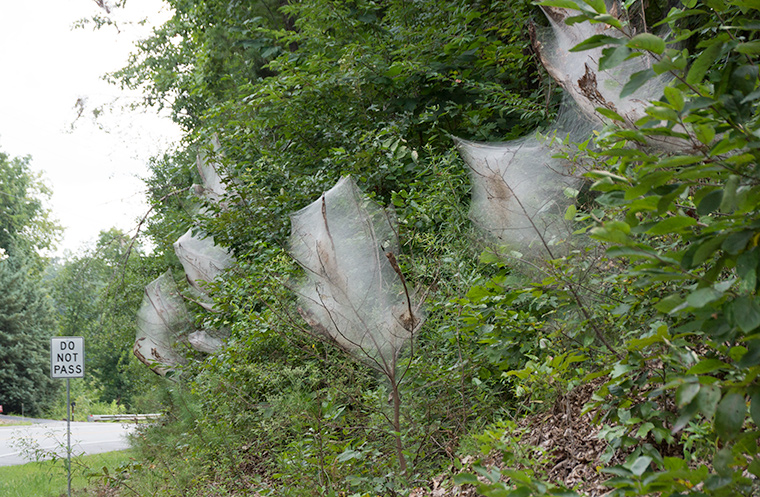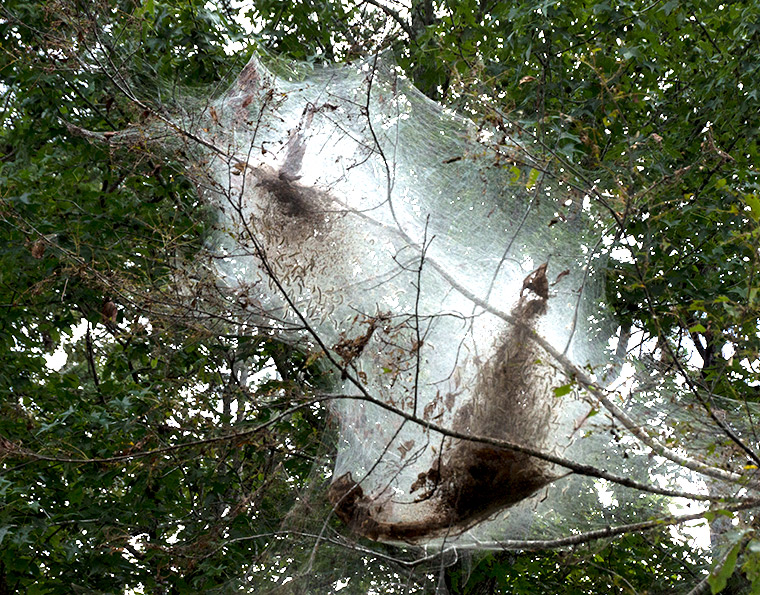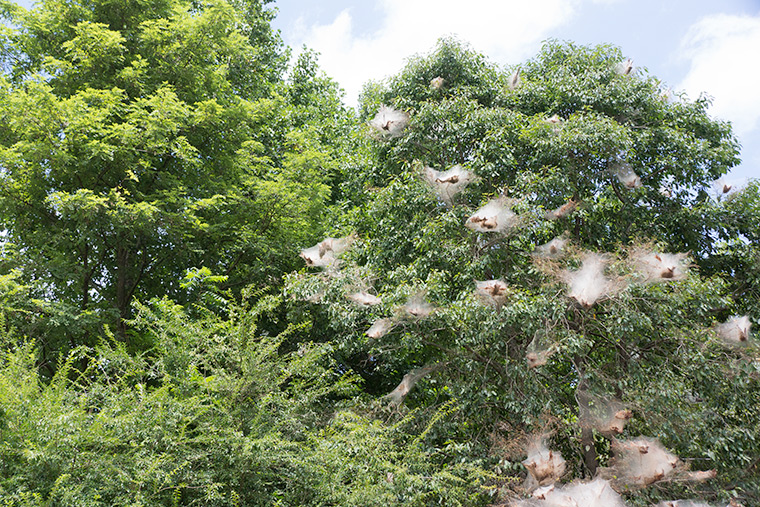How about this…is it some sort of ghost in the woods? Rather more mundane I am afraid. It is the web made by a colony of Tent Caterpillars (Malacosoma americanum). This has been an unusually fruitful year for many sorts of plants and animals around here, and the Tent Caterpillars are no exception. This set of photographs was taken along a short stretch of highway just north of our house.
I have included a highway sign in the photograph above to give some idea of the scale of these webs. There were hundreds of feet of webs like these along the road we traveled.
Here is a closer view of one colony. The individual caterpillars can be seen in masses inside the web. They normally stay inside the web for protection during the hotter part of the daylight hours, then come out at night, early morning or early evening to feed on adjacent foliage. They make a trail of silk as they move along branches toward edible leaves. Some pheromones are also deposited along the silk trails, and other members of the colony follow these trails to food sources. One caterpillar can recruit the entire colony to follow it to a new plentiful food source.
Tent Caterpillars are subject to predation by tachinid flies and various sorts of parasitic wasps. When one or more members of the colony detects such a predator, they signal in some way and all the members of the colony may begin to thrash about, thus giving a moving target to the fly or wasp and reducing its ability to oviposit on the caterpillars.
The caterpillars are apparently quite distasteful. If their diet contains wild cherry leaves, which contain cyanide linked to carbohydrates, they are able to store the cyanide in their bodies without harm to themselves. However, when threatened they are able to regurgitate cyanide-containing fluids which deter many potential predators.
When I was a kid, we used to use Catalpa Worms (Ceratomia catalpae) for fish bait when we could get them. But there were not many Catalpa Trees (Catalpa sp.) around. So we got the bright idea of using Tent Caterpillars for fish bait. There were plenty of these around, even if they were messy to collect. I don’t know if it was cyanogenic saliva or what, but no fish would bite on them at all.
The only birds that are known to eat Tent Caterpillars are cuckoos, both Yellow-Billed Cuckoos (Coccyzus americanus) and Black-Billed Cuckoos (Coccyzus erythropthalmus).
Another thing that is notable about Tent Caterpillars is there preference for certain tree species. This photograph shows one tree heavily infested but adjacent trees and shrubs are untouched. Tent Caterpillars seem to prefer trees in the Rose family (Rosaceae)s such as Cherry and Apple for deposition of eggs.
Tent Caterpillars are generally regarded as pests. They are deemed unsightly in themselves, and they certainly can defoliate a tree in short order. My grandfather used to get rid of them by tying a rag onto a long pole, soaking the rag in kerosene, lighting it up and burning the webs and their inhabitants. This performance was eagerly observed by us when we were young.




